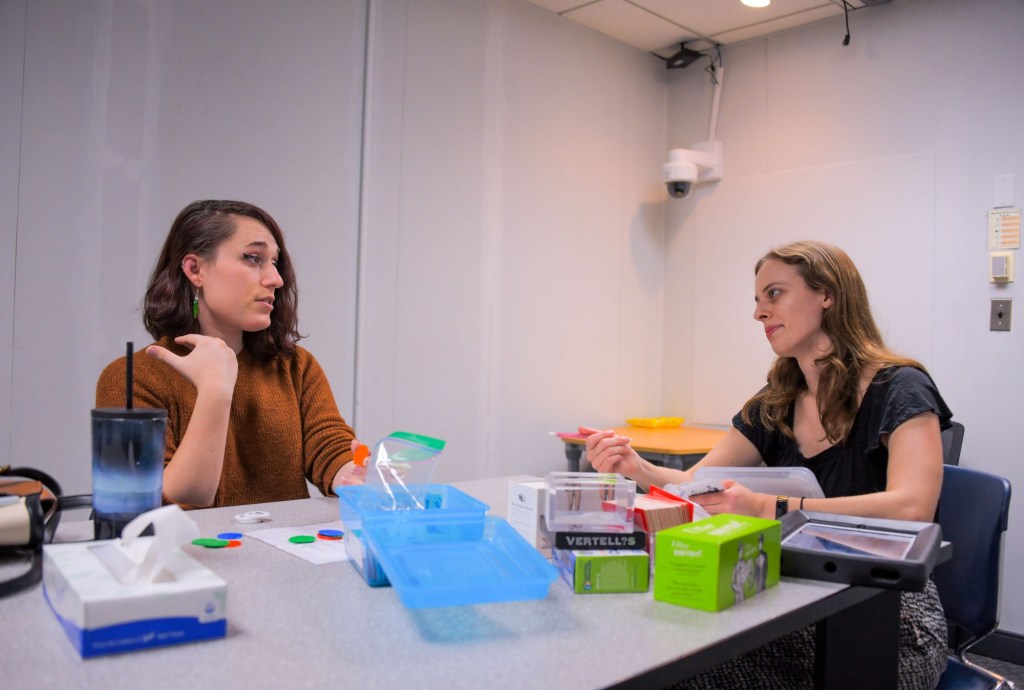“I’m really sick of you doing that.”
Jessie Buckley sighed, shifting a curtain of dark red hair from her face. Inside a small, windowless room on the University of Maryland’s campus in College Park, she glanced across the table at Katie Aveni, a speech-language pathology master’s student, who nodded encouragingly.
Again, Buckley sighed.
“I’m really sick of you doing that,” she said, injecting frustration into every word.
For the last six months, Buckley, a 26-year-old trans woman who lives in Annapolis, has been developing a new voice with the university’s Hearing and Speech Clinic. The voice is much higher than the voice she had after going through male puberty. It’s slower and smoother, and is sweet and warm, even when she’s feeling shy. It’s brighter now.
She’s still learning how to adjust it when she’s sad or angry — the skill she was working on last fall when she practiced saying she was “sick” of someone doing something. But for the first time in her life, she’s starting to feel like her voice reflects who she is.
While not every trans or nonbinary person needs gender-affirming voice therapy, experts say it’s necessary health care for some people experiencing gender dysphoria. That’s the condition defined by the American Psychiatric Association as a feeling of disconnect between a person’s gender identity and the gender they were assigned at birth.
It’s less physically invasive than other procedures, like chest masculinization or facial feminization surgery. But it can take months of consistent, sometimes emotionally painful practice for changes in a person’s voice to become a habit. Meanwhile, the patient has to go to work or school, make calls, and order from restaurants with one of the most visible signs of their gender in flux.
“You can choose how to dress on a given day, you can choose how you act on any given day. The voice is much harder to choose to be different,” Buckley said. “It’s a…
Read the full article here







